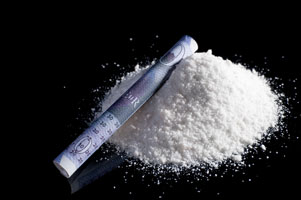Detecting cocaine through drug testing is now a common and accepted  practice in the workplace. The test results give employers physical proof the illicit drug was recently used and the worker is presenting a workplace safety hazard. Safety in the workplace is jeopardised because cocaine has a serious impact on the brain. The seriousness of the effects was accepted, but the full impacts were not fully understood until the recent application of a new neorimaging technique that was able to capture the physical effects of cocaine on the brain.
practice in the workplace. The test results give employers physical proof the illicit drug was recently used and the worker is presenting a workplace safety hazard. Safety in the workplace is jeopardised because cocaine has a serious impact on the brain. The seriousness of the effects was accepted, but the full impacts were not fully understood until the recent application of a new neorimaging technique that was able to capture the physical effects of cocaine on the brain.
Cocaine is a psychoactive drug that impairs the central nervous system. The typical physiological short-term effects include euphoria, tremors and excitability, followed by paranoia and severe anxiety. Repeated use leads to hallucinations, persecution delusions and mood disturbances. These symptoms of cocaine abuse are the result of cocaine’s affect on the brain. Cocaine blocks dopamine transporters, preventing dopamine reuptake by the neurons releasing the dopamine in the first place. As a result, an abnormally high concentration of the dopamine remains in the synapse, leading to the “high” experienced by drug users. The part of the brain that is most influenced is responsible for learning, attention and physical movement.
Coke Strokes On the Rise
However, what many do not know is that cocaine can cause strokes and heart attacks. “Coke strokes” are on the rise as more people regularly use cocaine. Unfortunately, a wide range of middle aged workers believe cocaine can be safely used as a party drug, but that is simply not true. The risk of having a stroke is increased 14-fold with cocaine use. In fact, cocaine users of all ages are at risk of having a stroke, and girls as young as 17 years old have showed up at emergency rooms with the symptoms of stroke. Men who are over 40 years old have an even higher risk of a stroke because they are at a higher risk of coronary heart disease.1 This has clear implications for the workplace because cocaine abusers are attempting to make work decisions and complete physical activities using impaired brains. Workers experiencing higher rates of strokes and heart attacks also increase medical premiums and health care expenses and experience reduced productivity.
The higher stroke and heart attack risk is due to cocaine’s affect on blood flow. Cocaine restricts blood flow in main blood vessels and small capillaries. Health professionals have intuitively known this for years due to the high rates of strokes amongst cocaine users, but recently it was proven through imaging. In other words, there are now pictures proving that cocaine induces cerebral microischemia, leading to an increased risk of stroke. Microischemia is the term used for the disruption of blood flow to the smallest blood vessels.
Picture Imperfect
A new high-resolution 3D optical Doppler imaging tomography technique has begun to uncover the underlying physical processes in the brain that result from cocaine abuse. The imaging technique has captured pictures the smallest capillaries in the brains of mice contracting within 2-3 minutes after cocaine use. Some of the blood vessels were constricted by as much as 70 percent, and recovery took up to 45 minutes or longer. The more often cocaine is used, the more pronounced the effects. The lack of blood flow decreases oxygen delivery to the brain, thus increasing the risk of neuron destruction and ischemia.2 The neuroimaging technique could prove to be a valuable diagnostic tool when people show up in emergency rooms after cocaine use and are at risk of having a stroke.
One of the most powerful tools employers have to support workplace safety is the drug test kits. Including kits like the Oraline Saliva Test in a random drug testing program gives employers the peace of mind that worker cocaine use will be detected as early as possible. The effects of cocaine on worker brains present a serious threat to workplace safety and productivity. A brain on cocaine cannot process information correctly and impairs physical movement as neurons fire incorrectly and blood flow is restricted. There is an old saying that claims a picture is worth a thousand words. The new neuroimaging technique has simply proved its truth of that saying.
Mediscreen (http://mediscreen.net.au/) partners with employers to provide customised onsite drug and alcohol testing services. Support services focus on accuracy, thoroughness and reliability.
References
1 Browne, Rachel. (2011, April 10). A fine line to an early death. Retrieved from The Sydney Morning Herald: http://www.smh.com.au/national/a-fine-line-to-an-early-death-20110409-1d8cg.html
2 Stoney Brook Medicine. (2012, October 10). Neuroimaging technique captures cocaine’s devastating effect on brain blood flow. ScienceDaily. Retrieved 2012 December 2, from http://www.sciencedaily.com/releases/2012/10/121010151237.htm.


